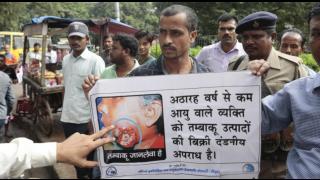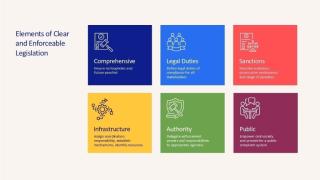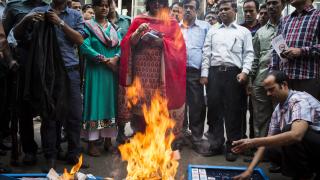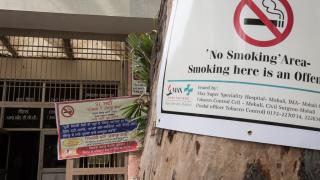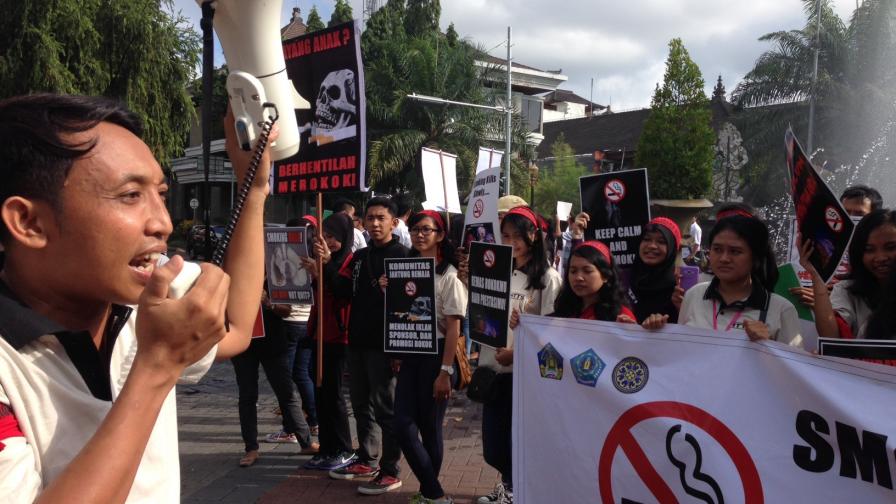
GOAL: Preventing tobacco industry interference in all stages of implementation
The tobacco industry works tirelessly to interfere with tobacco control policies, often positioning themselves as good actors in tobacco control efforts while secretly working to undermine legislation. It is essential to stay vigilant at every step to identify, expose and counter industry interference.
If industry interference is successful, it can delay implementation, loosen regulations, or roll back tobacco control efforts. The tobacco industry uses a common set of tactics to attack tobacco control policies.
How to identify interference
Common industry tactics:
- Provide public venues with smoking tools such as branded ash trays, or retailers with equipment such as cash registers or refrigerators
- Reimburse retailers or venue managers when they receive a fine
- Allies and Front Groups: the “third party” technique, build alliances and front groups to represent its case
- Counter Critics: attempt to weaken and fragment the public health community
- Influence Science: produce and disseminate misleading research and information
- Policy Interference: directly lobby and influence tobacco control policy making
- Lobby Other Policy Makers: influence “upstream” policies to make it harder to pass public health regulations
- Threaten to Take Legal Action: litigate or threaten litigation
- Philanthropy and Corporate Social Responsibility: seek to manage and enhance its own reputation in order to increase its ability to influence policy
- Bribery and Hospitality: offer money or goods to governments and policy makers to increase influence
featured resources
Stopping Tobacco Organizations and Products - A Global Tobacco Industry Watchdog
Stopping Tobacco Organizations and Products (STOP) works to understand and expose the tobacco industry’s efforts to derail tobacco control and hook a new generation of users. STOP's Resources Archive arms and supports stakeholders with tools and resources to counter the industry, including the latest analyses, reports, and information on the industry’s tactics.
Tobacco Tactics: The essential source for rigorous research on the tobacco industry
Tobacco Tactics investigates tobacco industry strategies and tactics for undermining tobacco control efforts and provides rigorously researched reports, profiles, and information on industry players, allies, and activities.
WHO FCTC Guide on How to Conduct Industry Monitoring
Tobacco industry interference remains the most significant barrier to the global implementation of Article 5.3 of the WHO FCTC. This guide aims to assist parties in their efforts to implement and protect tobacco control efforts from tobacco industry interference.
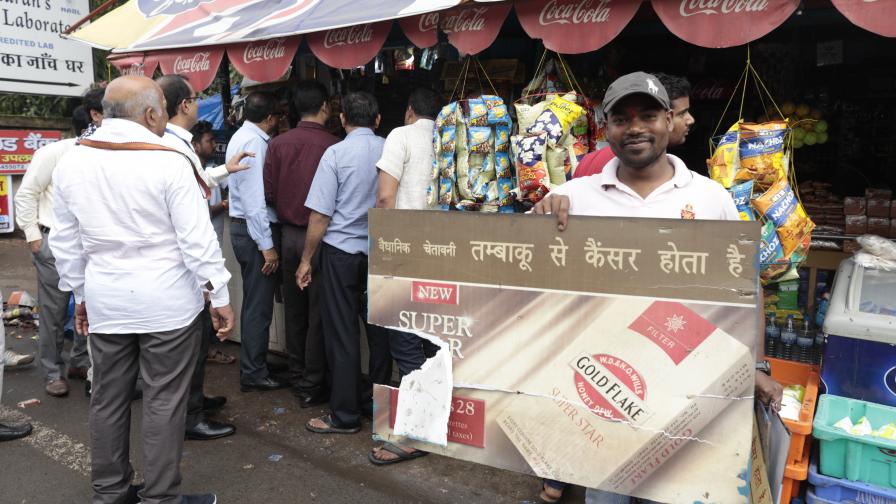
In 2005, India’s Health Ministry published rules that banned any display of brand names, pack images or promotional messages. In 2017, Reuters exposed that Philip Morris’ marketing strategy in India relies heavily on kiosk advertising and social events, laid out in hundreds of pages of internal documents that span from 2009 to 2016. Despite the ban, Philip Morris’ India unit paid kiosk owners monthly fees for ads and product displays and provided free cigarettes. Enforcement officers routinely take down ads and product displays but they reappear.
How to Counter Interference
From legislation to compliance, the tobacco industry will attempt to interfere at every step of implementation. It is important to swiftly identify interference, expose it and then counter it. Countering industry interference can be used as an opportunity to amplify policy implementation, enforcement measures and health communications on tobacco use.
Strategies to counter industry interference include:
Anticipate interference and develop policy specific plans: different policy measures and steps of implementation will require different counter efforts. Develop a specific plan to counter interference during the planning and resource allocation phase to avoid the industry stopping or delaying implementation.
Example: Crooked Nine- Nine Ways the Tobacco Industry Undermines Health Policy
Stay prepared with scientific evidence: strong legislation and policy measures are based on scientific evidence. Use this evidence to refute industry opposition and arguments.
Collect data: Data collection is pivotal to prove the success of implementation and effectiveness of the legislation. Use the data gathered during implementation and monitoring as evidence against industry claims.
Engage the media: Expose interference to policy makers, stakeholders and the media to build public support for the legislation and enforcement. Engaging the media in this way can result in earned media and public knowledge of the legislation, assisting compliance and enforcement efforts.
WHO FCTC Article 5.3: Use Article 5.3 as guidelines for stakeholders, policy makers, and others who engage with the industry, to negate interference in policies and implementation.
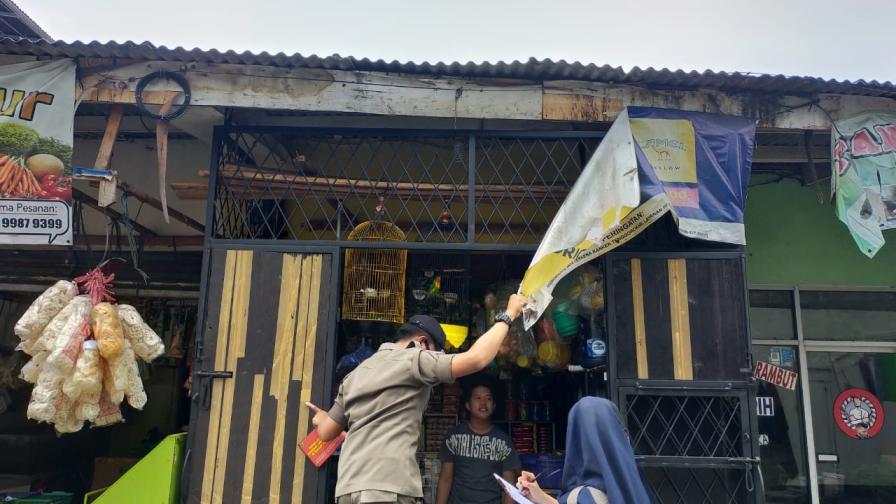
In 2014, Depok City passed a local government regulation to make the city 100% smoke-free and free from tobacco advertising and promotion at points-of-sale. The regulation also banned tobacco product display. The tobacco industry consistently undermines this law by providing retailers with advertising to display in their stores. They have also provided some retail chains with cupboards or curtains to hide the display of tobacco products but sometimes use the brand's colors and are too small. This results in the products still being visible, in violation of the law.
Implementation Areas
Legislation
Effective tobacco control laws are passed by a legislative body to protect the public from the harms of tobacco use.
Regulations
Issued by an executive authority or government regulatory agency, a regulation (or rule, order, ordinance or guideline) explains how to implement a specific law and its related penalties and sanctions.
Coordination and Planning
Multiple government agencies are frequently tasked with tobacco control law implementation and enforcement. Effective coordination and communication between them is key.
Stakeholder mobilization
Tobacco control law compliance depends on diverse stakeholders with both the capacity and commitment to effectively implement and enforce them.
Public communications
Public education campaigns enumerating the benefits of tobacco control legislation help build consensus and facilitate smooth implementation.
Enforcement Actions
Multiple agency coordination, stakeholder engagement with stakeholders, and strategy and planning activities are all critical components of enforcement.
Monitoring and Evaluation
A plan to assess progress and evaluate impact must precede implementation.
Compliance
Tobacco control law compliance increases the percentage of the population that is protected from tobacco harms.

